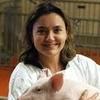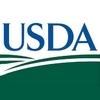Explore all the information on
Swine management
Pig production is the systematic rearing of pig breeds on scientifically based management principles for economic benefit. The main objectives of pig production are to provide consumers with pig meat and related products and to generate income for farmers.
Pig production plays a significant role in the livestock industry, providing an important source of protein and other valuable products. The systematic approach to pig rearing ensures that the pigs are healthy and well-cared for, which in turn leads to better quality products and higher yields. The focus on scientific principles and efficient management helps to reduce waste and increase profitability for farmers.
A swine producer who masters the art of good management has excellent profit opportunities. This is especially true with disease prevention and control. A healthy herd of good-growing, quality breeding animals — adequately fed and housed — provides maximum profit opportunities for the owner who does not over-spend for facilities and/or feed.
As a result of COVID-19, veterinarians need to look at biosecurity in new ways. As practitioners we have to focus on protecting pigs and maintaining the economic viability of the farm. We are trained to deal with zoonotic diseases with a primary goal of protecting ourselves, our clients, and the food supply chain. Yet, now we are being asked to think more broadly, more holistically as an occupational (One Health) specialist, thinking about the health of farm employees, their families, and...
Comments : 0
Recommendations: 1
COVID-19
Coronavirus Disease 2019, also known as COVID-19, caused by the virus Severe Acute Respiratory Syndrome Coronavirus 2 (SARS-CoV-2) is a “person-to-person” disease. Efforts must be directed at protecting the health of personnel, and their families, involved in the care of animals, and supporting the operation of the farms, and the overall food production supply chain (e.g., feed distribution, feed mills, slaughter plants, truck drivers,...
Comments : 0
Recommendations: 1
My intention in preparing this article is to bring to the knowledge of the community involved in the production of pigs, which based on a research program conducted with pigs of different sexes, which is feasible and advantageous for the producer, to explore the earning capacity compensatory weight of pigs, in the growth and finishing phases I and II.
The experiments to which we refer were conducted with castrated male pigs, immunocastrated males and females, selected at the end of...
Comments : 0
Recommendations: 0
INTRODUCTION Modern livestock production is characterized by intensification, i.e., a higher number of animals per farm. To achieve successful intensification of livestock production, without negative effects on animals, farmers and farms, certain requirements need to be met. One of these requirements for intensification of livestock production is the capability of the farmer to take care of a larger number of animals. This requires healthy and easy-to-manage animals that need...
Comments : 0
Recommendations: 0
Dr. Mary Battrell, Staff Veterinarian, Smithfield Hog Production, gave tjhis presentation during the 2018 NIAA Antibiotic Symposium: New Science & Technology Tools for Antibiotic Stewardship....
Comments : 0
Recommendations: 0
Dr. Joel Nerem (Pipestone Veterinary Services) explained this producer program to analyze antibiotic resistance, during the 2018 NIAA Antibiotic Symposium....
Comments : 0
Recommendations: 2
Introduction Confined swine (Sus scrofa L.) production generates large volumes of wastewater typically stored and treated in anaerobic lagoons. These lagoons usually require a sludge maintenance plan consisting of regular sludge removal followed by land application (Barker, 1996). Anaerobic lagoon liquid and sludge are both rich in nutrients, particularly nitrogen (N), phosphorus (P), copper (Cu), and zinc (Zn). However, P can be the limiting nutrient on land...
Comments : 0
Recommendations: 0
Introduction The reproductive output of pigs depends on many factors affecting both females and males. It is generally accepted that there is a large variation in the fertility results, mainly caused by farm- and sow-related parameters (Hanenberg et al., 2001). In southern Uruguay, seasonal variations in reproductive performance of swine herds are observed, with farrowing rate below 57% between November and February (Motta, 1991). Several factors can be minimized...
Comments : 0
Recommendations: 0
INTRODUCTION Brazil is the fourth largest producer and exporter of pork worldwide, rearing pigs under intensive feedlot conditions, to optimize production and economic performances (BAPTISTA et al., 2011). Constant and growing consumer concerns about animal welfare and rearing conditions have boosted the search for sustainable social-friendly production systems (SARUBBI et al., 2010). In conventional swine rearing systems, animals are housed in separate facilities,...
Comments : 1
Recommendations: 1
INTRODUCTION As mentioned in CERVI et al. (2010), the expansion of pig farming has resulted in a significant increase in the volume of produced waste, increasing the risks of environmental contamination. The swine excrement shows great pollution potential. Thus, this residue must be handled properly, or may cause serious impacts to the ecosystem. In the definition of KUMAREZAN et al. (2009), residue is an energy resource disposed in an inappropriate location; however, this could...
Comments : 0
Recommendations: 0
Control methods are needed to abate NH3 losses from swine anaerobic lagoons to reduce the contribution of confined swine operations to air pollution. In a 15-mo meso-scale column study, we evaluated the effect of manure pretreatment on water quality, reduction of N losses, and sludge accumulation in swine lagoons using (i) enhanced solid–liquid separation with polymer (SS) and (ii) solid–liquid separation plus biological N treatment using nitrification–denitrification (SS +...
Comments : 0
Recommendations: 1
1. Introduction Weaning is one of the most challenging phases in a pig's life, often accompanied by reduced growth performance and increased incidences of diarrhea (Leibbrandt et al., 1975; VenteSpreeuwenberg et al., 2003). This phase is frequently characterized by reduced feed intake (Bruininx et al., 2002a; VenteSpreeuwenberg et al., 2003) which, in concert with an immature digestive and immune systems, predisposes the piglet to gastrointestinal disturbances. The major effects...
Comments : 0
Recommendations: 3
Large volumes of wastewater from confined pig production are stored in anaerobic lagoons. Control methods are needed to reduce air pollution by foul odors released from these lagoons. In a pilot-scale experiment, we evaluated the effect of pig wastewater pre-treatment on reducing the concentration of selected malodor compounds in lagoons receiving liquid from: (1) flocculant enhanced solid–liquid separation (SS), and (2) solid–liquid separation plus biological N treatment using...
Comments : 0
Recommendations: 0
Introduction In general the development of hyper prolific sows has been associated with a dramatic increase in perinatal mortality. Analysis of the performance of French sow herds (IFIP, 2007) indicates that total number of piglets born per litter increased from 11.9 in 1996 to 13.8 in 2006. Simultaneously, total mortality increased from less than 19% up to 21%, with about 25% of herds losing more than 25% of piglets born before weaning...
Comments : 1
Recommendations: 0
1. Introduction Transport is an essential and critical factor in modern pork production. During transport, pigs experience many undesirable factors and potential weather extremes. Factors that impact the pig’s well-being during transportation include: space allowance and loading density [1,2], transport duration [3], trailer design [4–6], handling methods [7] and trailer management [1,5,8,9]. Specifically, great challenges for maintaining...
Comments : 0
Recommendations: 0
Introduction
The feed intake of swine is a deciding factor for both health and growth. Its relationship with growth is obvious; it is the nutrient supply above maintenance which sets the upper limit to the growth of an animal. The impact of feed intake on health is underappreciated. Experiments with E. coli infections showed this nicely. These experiments aimed at screening feed additives against E. coli. However, each attempt to find effective additives, other...
Comments : 0
Recommendations: 2
Introduction The fertility results of pig artificial insemination (AI) in The Netherlands are considered to be one of the highest worldwide. More than 98% of the sows in The Netherlands is mated through AI. Sow farmers put great trust in AI and are fully depending on the quality of the product. The Dutch cooperative pig AI centers put large efforts in producing high quality insemination doses as far as semen quality and genetic quality. In this paper the following aspects...
Comments : 0
Recommendations: 1
INTRODUCTION Currently the potential impact of manure on the environment represents one of the world agriculture's major challenges. Once dominated by many small operations as part of traditional crop-livestock farms, livestock production has become highly concentrated in large operations. This development has separated animal production from crop production. Thus, the amount of manure produced often exceeds local demand for use as...
Comments : 2
Recommendations: 1
Jacob Dall, Technical and R&D Manager at Vilofoss, talks to us about the company's developments in finding solutions for the pig industry during Eurotier 2016, in Hannover, Germany....
Comments : 0
Recommendations: 1
Introduction Growing pigs produce tremendous amounts of heat (Brown-Brandl, et al. 2004) and when raised in confinement facilities this heat must be removed by the barn's environmental control system (Brumm, 2012). Standard barn ventilation systems that use ambient or outside air to remove this heat has only limited capacity to control rising barn temperaturesduring warm and hot weather. For this reason, numerous studies and papers have been...
Comments : 1
Recommendations: 0




























